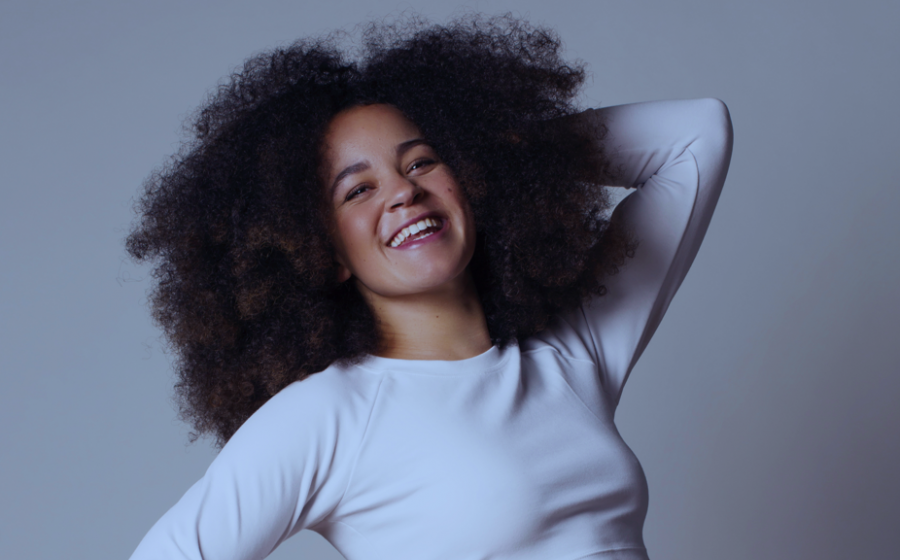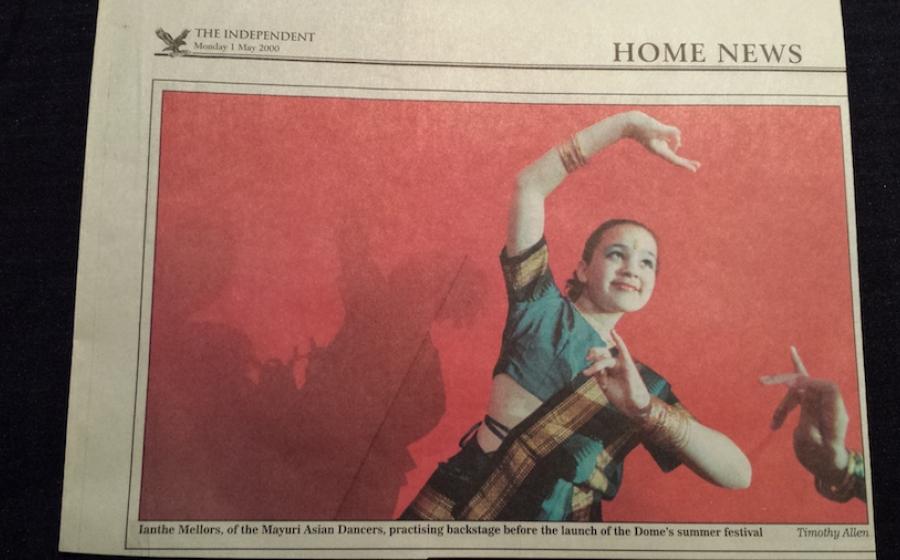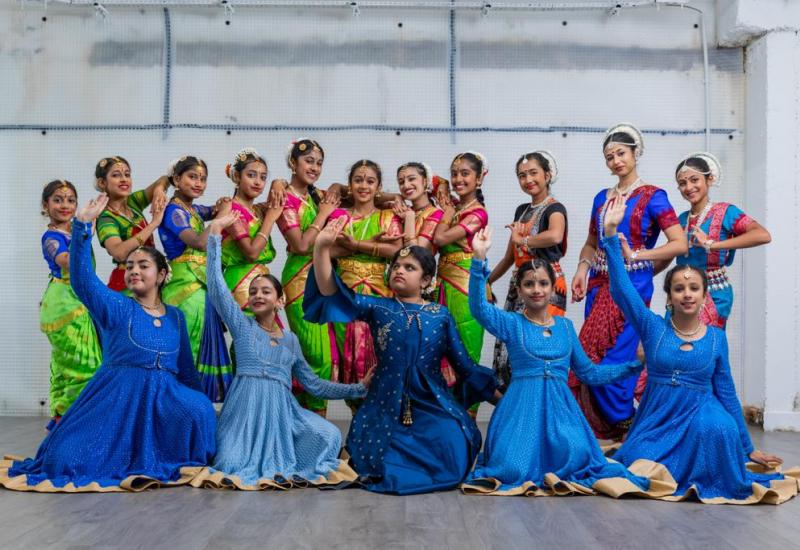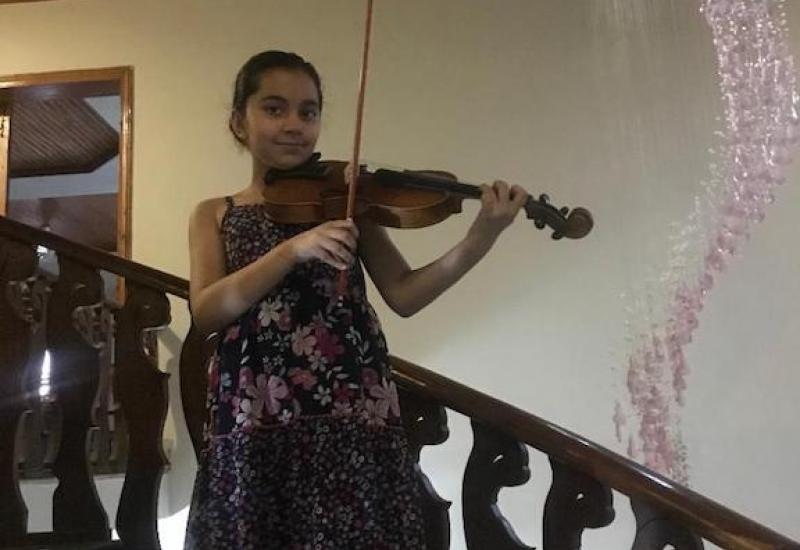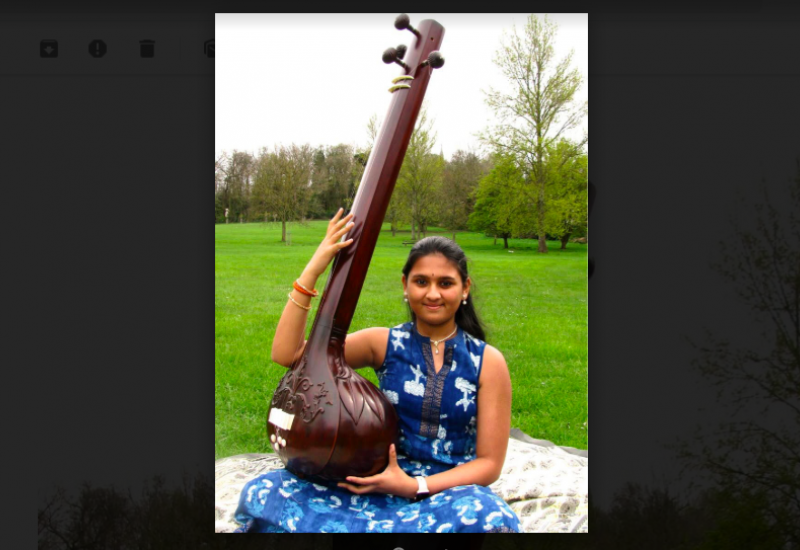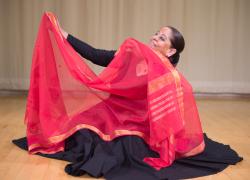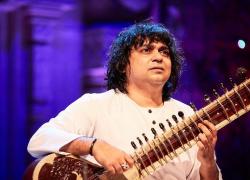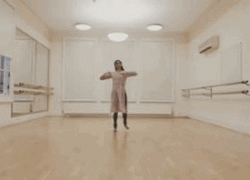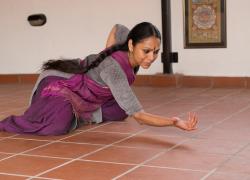"I hear music... and can't help but move."
Ianthe Mellors is a dancer, choreographer and teacher from Bedford, England, who has won awards for her work, suffered injury, but come back dancing.
Ianthe began ballet classes at the age of three and odissi classes at five; since then she has trained in a range of styles, including Latin American ballroom dance, contemporary dance at the Bedfordshire Youth Dance Company (BYDC), African and stepping dance. She studied dance at Middlesex University, and during the course spent a year abroad at Goucher College, Baltimore. Following her graduation with a First Class degree in 2011 she was injured in a car accident; but she remained focused on dance and has been supporting herself as a professional dancer ever since. We interviewed her for Pulse.
Could you tell us about your family and your early influences?
My mum is from England and my dad was born in Trinidad. Both of my parents have always loved and supported dance and I’m incredibly lucky that they saw my passion for it early on and encouraged me to try every style I could. They regularly took me to watch performances so I grew up immersed in it. I remember really wanting to find a way connect to my Trinidadian heritage and culture and the easiest way I found to do that was through music and dance.
Any dance connection within family or friends?
I remember I was four years old, already taking ballet lessons and I saw my family friends Katie and Hannah Ryan perform odissi. I was mesmerized by their costumes and excited by their dancing, I couldn't want to turn five and join them. I danced with Katie and Hannah for over seven years with Kadam in Bedford. Then almost ten years later Katie and I were both selected to be members of Dance Umbrella's mentorship programme The Group. She had been nominated by Akademi and I had been nominated by the Association of Dance of the African Diaspora. On the first day we had to share the story of what/who inspired us to dance; it was great telling the story and thanking Katie for being my inspiration.
When did you first become interested in dance?
My parents always joke that I came out dancing. But I’m sure it was the first time I first heard music. I hear music, any song with any beat and I can't help but move.
Did you have an affinity with a particular style of dance?
I don’t think I did, I just love moving. As I grew up I became interested in street styles but I still trained in and enjoyed the classic styles. If I have not danced or moved for two days or more you can always tell, I am so much more full of life when I’m dancing!
In your three year degree course, what were the most valuable skills that you learned? Do you think academics helps you to become a better dancer?
Yes, I definitely think academics helped me to become a better dancer. They made me a thinking dancer and helped equip me with many skills that I have been able to apply to various roles within the dance industry providing far more opportunities than I would have had otherwise. For example, had it not been for my degree and the theoretical skills I acquired I may not have been able to work within the dance industry in the way I did after the car accident. Through those roles I gained a broader insight into the dance industry which I was then able to apply when I had recovered and began performing and auditioning again.
Could you give us your impressions of dance in the States?
In New York where I studied the attitude was much more supportive within the dance community and there was a lot of emphasis on the important of versatility as a dancer as well as individuality. Since moving back to London I see that shift happening here too which is great. I did find that cultural dance forms weren’t as celebrated or easy to find in New York as I have found growing up in England.
Do you intend to support yourself financially through dance?
I already do. Before I left for New York, even though I was injured and unable to dance, I still worked in dance teaching and on a dance event called MOVE IT assisting with the programming of the performances and classes and marketing. Since moving back from New York I have been supporting myself through performing and teaching dance.
How do you describe your dance in terms of commercial/art divide? Is there a difference between the two?
I really focused on my artistry during my degree and when I was growing up. However, when I was in New York retraining after my car accident my focus was training and learning lots of different dance styles so I found that my artistry took a back seat. I’m not sure why I separated the two whilst learning. Since coming back to London I’ve been focusing on bridging the gap and can already see the difference in my choreography and how I approach performing.
Why is dance important to you?
It keeps me focused, grounded and allows me to communicate. I always have a goal to reach or something to work on with dance so I never stop learning and growing, which I love. I love the escape it gives audiences and how it makes me feel when I’m dancing.
What do you feel that you gained from odissi?
I gained a vast amount of experience performing, rehearsing and training from an early age. I see aspects of it in my choreography and performance all the time whether it be subtle eye movements, percussive footwork or hand gestures. As with all classical dance forms it lay the foundation for other dance styles and genres making it easy for me to adapt to what is required of me. Through odissi I learnt musicality and to dance to a variety time signatures, how to be percussive with movement and isolate different body parts. It taught me to be grounded and I got to gain an insight into another culture through movement. I also learnt discipline, patience and to pick up movement even with subtle intricacies incredibly fast; all of which are very helpful skills to have in auditions and rehearsals. Without odissi I wouldn’t have performed the trio with Amit Jolapara at London Mela in 2016 or performed at the Millennium festival at what is now the o2 arena or in the Covent Garden Piazza.
Biography
Whilst with BYDC Ianthe won many national competitions and worked with Henri Oguike, one of Britain’s leading contemporary choreographers. Henri Oguike chose Ianthe to be lead in his work Quackers. Ianthe has worked on stage, film and television. After her car accident MTV Europe dedicated an entire episode of their series ‘Plain Jane’ to her comeback that aired on MTV worldwide. She has worked with with Vicki Igbokwe as part of London’s Southbank Centre’s Africa Utopia Festival, Amit Jolapara at London Mela, Maksim Chmerkovskiy (from Television’s Dancing with the Stars) live on ABC’s Good Morning America. She has also danced at the Millennium Dome, Covent Garden Piazza, Lydia Fraser-Ward at London’s Victoria and Albert Museum and Battersea Arts Centre.

